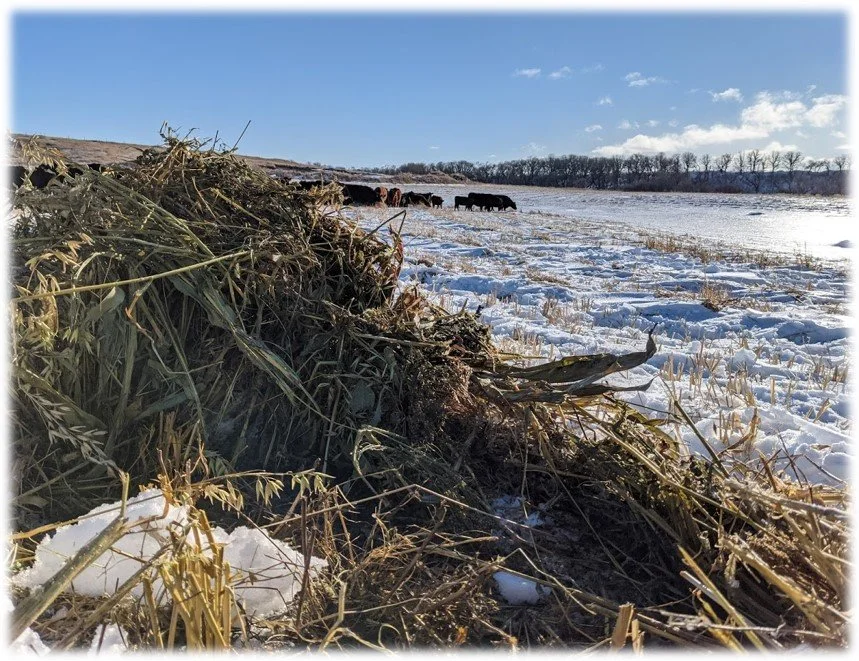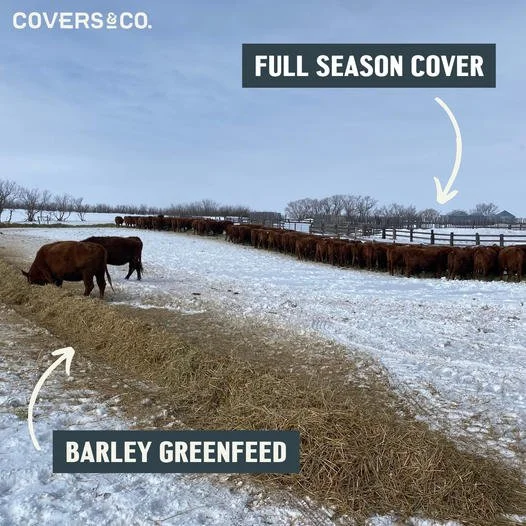How can our feed reduce our costs?
What is in our feed?
What constitutes a great feed?
The answer can be pretty simple: a high-value feed contains energy, minerals, and protein in sufficient quantities to support whichever animal management group we are trying to feed.
Putting up such a feed economically is where the challenge can arise, with often a requirement of supplementation of minerals and concentrates and the financial burden that comes with it. However, the old saying is true: “You can’t starve profits into a cow.”
The 2024 Manitoba Cow-Calf Cost of Production guide states $549.92 per head in feed costs (1). That is before we even start a piece of equipment… With rising additional costs of equipment, fuel, and labour. Even at higher-than-normal calf prices, the break-even point seems to remain slim.
The worry, at least myself, is what will happen as we ride this wave of higher prices as the markets level and begin to dip. I doubt that the additional costs we are experiencing in operations will dip at the same rate as the calf market.
So how can we cut costs now? To help position our operations to manage the dip better when it comes.
A few strategies come to mind immediately, and the keyword is DIVERSITY.
Dr. Obioha Durunna and his team have recently released some interesting research findings from Lakeland College. They have found that in a side-by-side trial of a polyculture forage and a mono-crop oat forage, both put up for swath grazing; there was an overall feed quality increase of the blend over the mono-crop. With no reduction in daily gain. (2) He hopes to expand his research to include a deeper dive into mineral and nutrient differences in the test forages.
This matches exactly what I see in my own operation when feeding a diverse poly crop forage vs standard hay. My cows do better. They consume significantly less mineral, have fewer calving issues, and rebreed better. I even had a producer recently reach out to his vet because he was concerned he had an issue in his herd because they were consuming less than ½ the mineral they typically do; the only change was this was the first year he had fed Full Season Cover silage.
The FEED TESTS are showing excellent feed.. but it appears there is more going on than meets the eye regarding overall quality.
But Why?
Well, a diverse stand of plants can access soil minerals more efficiently by forming symbiotic relationships with soil microbes. Those microbes can break chemical bonds which prevent nutrients from being plant-available and thus allow uptake into our forages for storage and later ingestion by our herd. This is all done essentially FREE with no additional soil amendments or inputs. With diverse species of plants that reach maturity at different times, we can maintain a higher nutritional value versus a mono-crop over a wider harvest window.
This diversity also gives us the additional value of fall regrowth to help extend the grazing season without additional cost or labour. This increased growth period also continues to feed our soils into the shoulder seasons, which helps build soil health overall and sets us up for better success in future years. Healthy soils hold more water, promote growth, and increase overall yields. All of which reduce our costs overall!
If we pair plant diversity with other feeding options and systems, we can see even further economic benefits and harness the power of our soils.
Bale Grazing – Can see reduced equipment, labour and operational costs, with added benefits of soil health in relation to organic material deposits and manure application.
Often associated with increased “waste”, more frequently, a net positive is observed when all other factors are included in calculations.
Image courtesy of Nerbas Bros. Angus
Swath Grazing – There is an even further reduction in equipment costs, with a slight increase in labour over bale grazing; however, maintaining soil health benefits from increased biomass, manure and organic matter deposits.
Rotational Grazing- Using rotational grazing, we can increase stocking density while improving soil health through manure distribution and trampling. Rotational grazing also allows us to grow more forage on a set number of acres.
An example of this is in our area, where stocking density is between 30-50 pairs a ¼ of full access pasture; I was able to stock 25 pairs on 70 acres from June until September, with significant stockpiled grass for use in early spring next year. Based on their consumption rate and forage growth rate, I could have stocked up to 35-40 pairs with similar results.
Overall, it comes down to looking at our status quo and how we can potentially improve our systems. A diverse forage that can reduce mineral intake, increase herd health, and prolong the grazing season are all positives that will affect our operational efficiency and our quality of life! When further paired with unique grazing systems, we can see real economic benefits at the end of the year.
We are excited about 2024 and are actively looking to partner with various research associations to help further the data associated with diverse forage crops. I personally think this is the future, just like Mother Nature intended all those years ago.
Just one man’s thoughts..
Keegan Miller
Further Resources
Evolution of Bale Grazing Vol 2
Evolution of Swath Grazing
Grazing Full Season Cover Crops
Extending the Grazing Season
References:
(1) Manitoba Cow- Calf Cost of Production Guide
(2) Alberta Farmer Express
https://www.albertafarmexpress.ca/livestock/forage-blends-benefit-swath-grazing/







